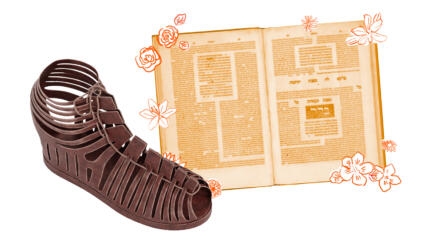Following a discussion of the centrality and fulfillment of the mitzvah to “be fruitful and multiply,” today’s daf turns to the topic of infertility. The mishnah explores what happens if a couple unfortunately cannot fulfill this commandment. The Talmud’s response to this painful situation demonstrates sensitivity and empathy and teaches a model of inspiration and hope in the face of other life challenges.
The mishnah on Yevamot 64a frames the discussion in somewhat rigid Jewish legal terms. A man is commanded to have children. If his wife has not conceived after ten years of marriage, he has the right to divorce her or take a second wife:
If a man married a woman and stayed with her for ten years and she did not give birth, he is no longer permitted to neglect (the mitzvah to be fruitful and multiply).
If he divorced her she is permitted to marry another man, and the second husband is permitted to stay with her for ten years.
With your help, My Jewish Learning can provide endless opportunities for learning, connection and discovery.
The mishnah provides protection for the wife, who is permitted to marry again. After all, it may in fact be the husband who is infertile. Or she might wish to marry a man who has already had enough children. Still, this is a sad ruling: An otherwise happy marriage might be altered irrevocably to maximize the chances that the man will have children.
The Gemara softens this ruling. First, it teaches that the man is obligated to pay the marriage contract (ketubah), since the inability to conceive may be due to him, not her. Next, the stories of the infertility of the matriarchs and patriarchs are looked to for guidance. A biblical proof text is cited to prove the ten year rule and ends up lengthening the ten year timeline.
It states in Genesis that Sarai (whose name was later changed to Sarah) gave Hagar to her husband Abram (later Abraham) as a wife after he “had dwelled ten years in the land of Canaan.” (Genesis 16:3) Yet, Sarai and Abram had been married far more than ten years without children!
The Gemara gives a few qualifications for how to calculate the ten childless years: If the couple lived outside of Israel, or if one was sick or imprisoned, these years are not counted. Furthermore, the Talmud reasons, Isaac and Rebekah also faced infertility, and a calculation shows that were married twenty years before having twins. The Gemara clearly wished to downplay the mishnah’s rule and allow for couples to stay together longer.
The rabbis also looked at the stories of infertility in the Bible to teach them how to cope with enormous life challenges. The sages believed that prayer can influence God, and they held up Isaac and Rebecca’s prayer — which is ultimately answered positively — as a model for all:
Rabbi Yitzhak said: Why are the prayers of the righteous compared to a pitchfork (eter)? As in the verse: “And He let Himself be entreated (vaye’ater)”? (Genesis 25:21)
This (verbal pun) indicates that just as this pitchfork turns over produce from one place to another, so the prayer of the righteous turns over the attributes of the Holy One, Blessed be He, from the attribute of rage to the attribute of mercy.
Our daf therefore expresses flexibility and empathy for couples struggling with infertility and also holds out hope for them, leaving us with this image that, like a pitchfork turning over hay, prayer can prod the heavens to flip over to the attribute of mercy.
Read all of Yevamot 64 on Sefaria.
This piece originally appeared in a My Jewish Learning Daf Yomi email newsletter sent on May 10th, 2022. If you are interested in receiving the newsletter, sign up here.



